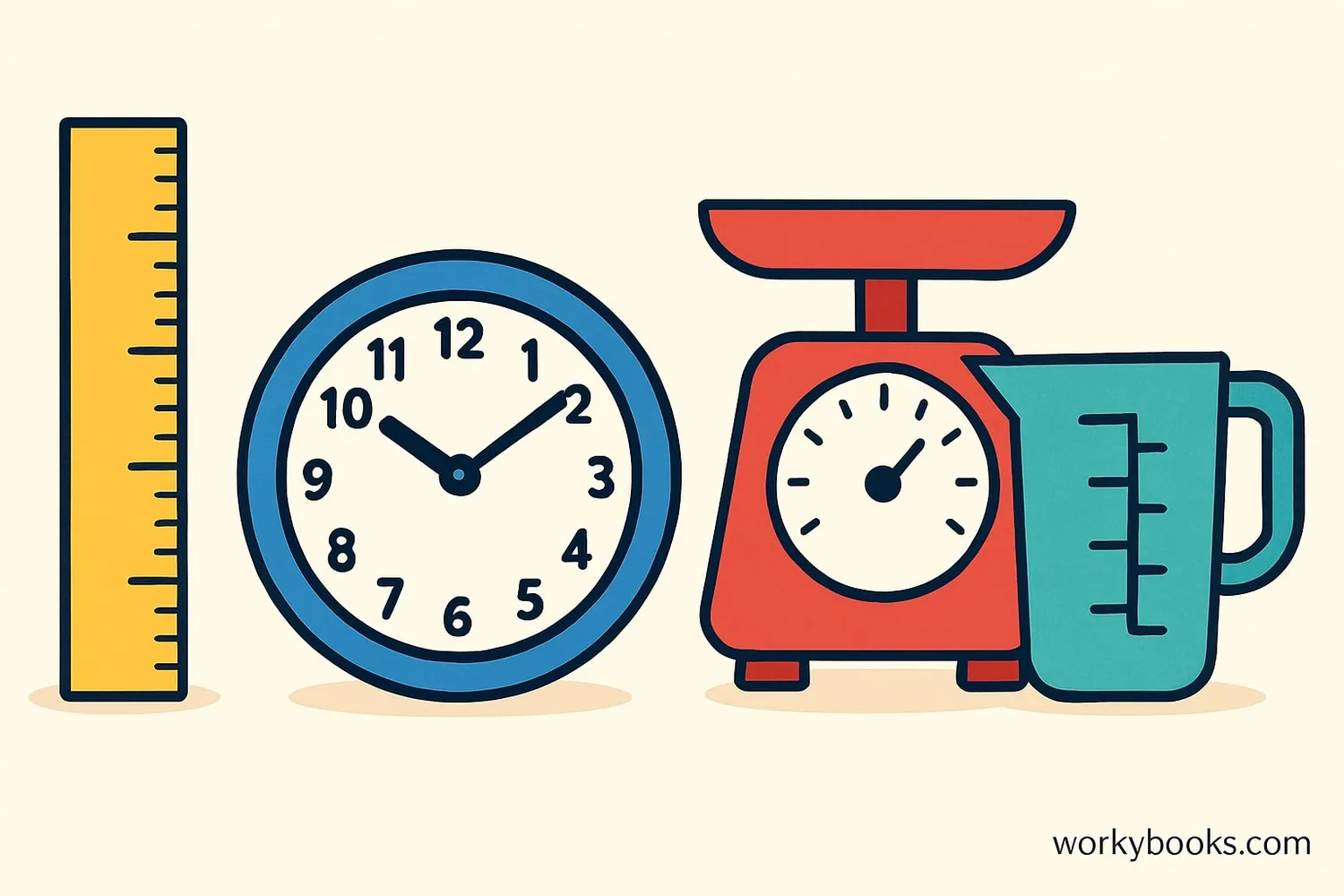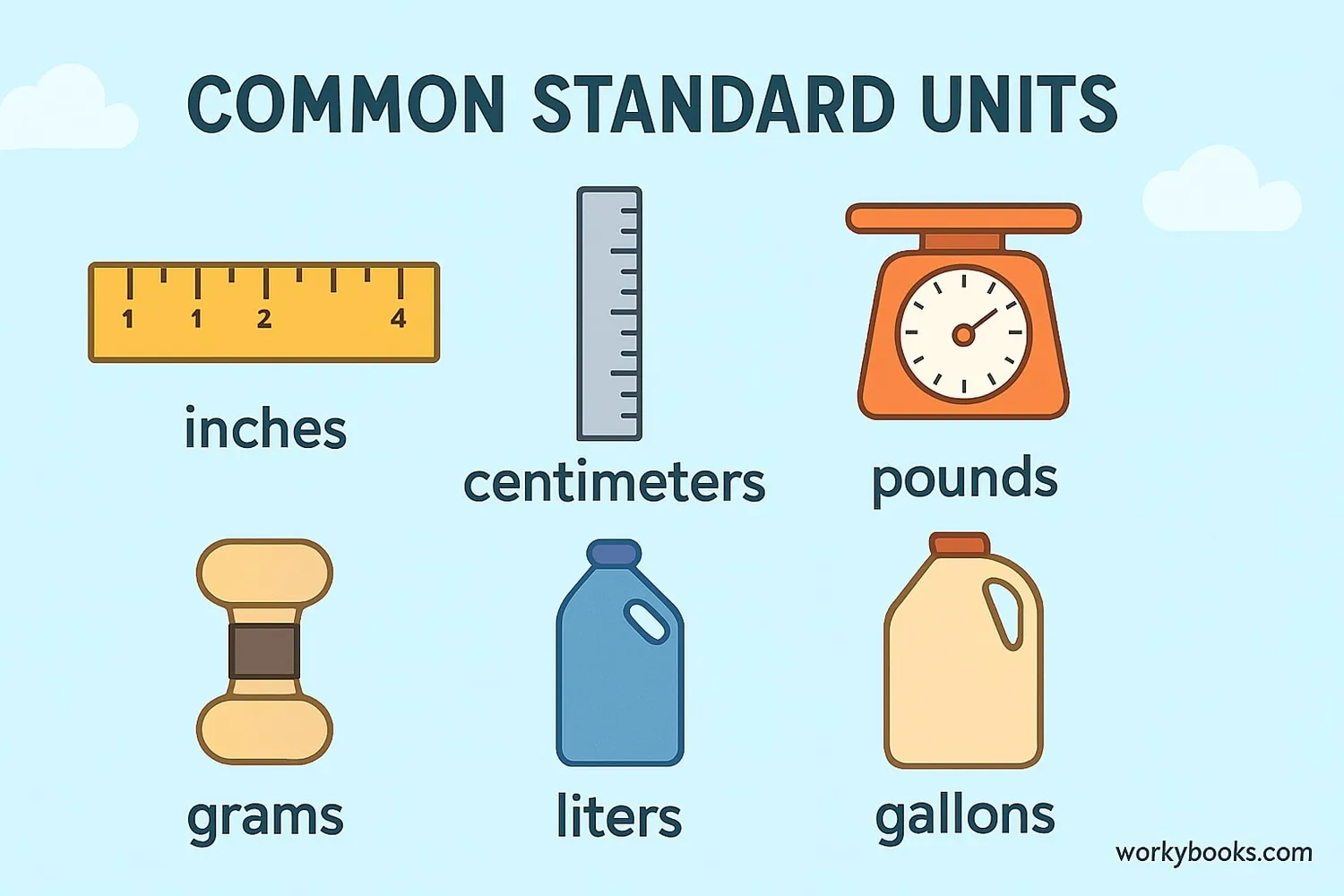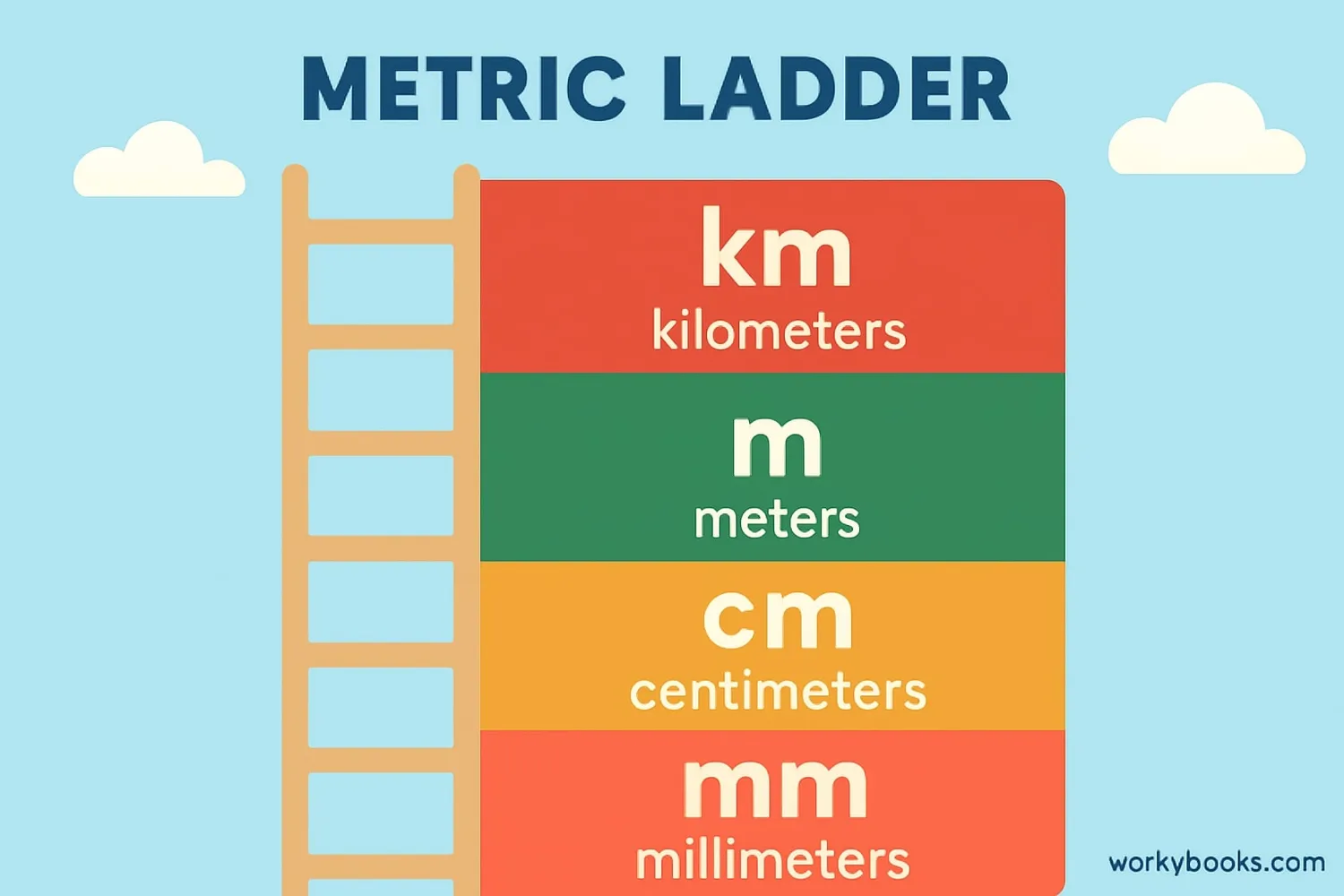Measurement - Definition, Examples, Quiz, FAQ, Trivia
Learn about length, weight, volume, time, money and temperature with easy explanations and practice activities
What is Measurement?

Measurement is how we describe the size, amount, or quantity of something. We measure things every day without even thinking about it! When you check how tall you are, weigh your backpack, or see what time it is, you're measuring.
We measure different things in different ways:
- Length - how long something is (like a pencil or a room)
- Height - how tall something is (like a person or a building)
- Weight - how heavy something is (like an apple or a book)
- Volume - how much space something takes up (like juice in a bottle)
- Time - how long something takes (like a school day or a recess)
- Money - how much something costs (like a toy or an ice cream)
- Temperature - how hot or cold something is (like the weather or your bath water)
Key Concept
Measurement helps us understand the world around us by giving numbers to things we see and use every day.
Standard Units of Measurement

Standard units are measurement units that everyone agrees to use. This helps us communicate measurements clearly. Imagine if everyone used different measurements - it would be confusing!
Examples of standard units:
- Length/Height: Inches, feet, yards, miles, centimeters, meters, kilometers
- Weight: Ounces, pounds, tons, grams, kilograms
- Volume: Cups, pints, quarts, gallons, milliliters, liters
- Time: Seconds, minutes, hours, days, weeks, months, years
- Money: Dollars, cents (in the US)
- Temperature: Degrees Fahrenheit, degrees Celsius
Remember
Standard units help people all over the world understand measurements the same way.
Non-Standard Units of Measurement

Before we had rulers and measuring tapes, people used non-standard units. These are everyday objects that can help us measure things. They're useful when you don't have proper tools with you!
Examples of non-standard units:
- Hand span: The distance from the tip of your thumb to the tip of your pinky when your hand is spread out
- Foot length: The length of your foot (but people have different size feet!)
- Paper clips: Can be used to measure small objects
- Pencils: Can measure the length of your desk
- Steps: Can measure the length of a room
- Water bottles: Can measure how much water a plant needs
Remember
Non-standard units are great for estimating, but for accurate measurements, we need standard units.
The Metric System

The metric system is used by almost every country in the world! It's based on the number 10, which makes conversions easy. The basic units are:
- Meter (m) - for length (about the length of a baseball bat)
- Liter (L) - for volume (about the size of a large water bottle)
- Gram (g) - for weight (about the weight of a paperclip)
We add prefixes to these basic units to make them larger or smaller:
- Kilo- (k) means 1,000 (kilometer = 1,000 meters)
- Centi- (c) means 1/100 (centimeter = 1/100 of a meter)
- Milli- (m) means 1/1,000 (millimeter = 1/1,000 of a meter)
Key Concept
The metric system is easy to use because you just move the decimal point to convert between units.
US Standard Units
The United States uses its own system of measurement called US Customary Units. This system comes from old English measurements. Here are the most common units:
Length:
- 12 inches (in) = 1 foot (ft)
- 3 feet = 1 yard (yd)
- 1,760 yards = 1 mile (mi)
Weight:
- 16 ounces (oz) = 1 pound (lb)
- 2,000 pounds = 1 ton (T)
Volume:
- 8 fluid ounces (fl oz) = 1 cup (c)
- 2 cups = 1 pint (pt)
- 2 pints = 1 quart (qt)
- 4 quarts = 1 gallon (gal)
Remember
The US is one of only three countries that still primarily use their own system rather than the metric system.
Conversion of Measurement Units
Conversion means changing a measurement from one unit to another. This is especially important when working with different measurement systems. Here are some key conversions:
Length Conversions
Weight Conversions
Volume Conversions
Conversion Tip
To convert between systems, multiply when converting to smaller units and divide when converting to larger units.
Measurement Practice Quiz
Test your measurement knowledge with this 5-question quiz. Choose the correct answer for each question.
Frequently Asked Questions
Here are answers to common questions about measurement:
Measurement Trivia
Discover interesting facts about measurement systems:
The Origin of the Inch
The inch was originally based on the width of a man's thumb. King Edward II of England declared in the 14th century that 1 inch equals 3 grains of barley placed end to end.
The Kilogram Standard
For over 130 years, the kilogram was defined by a physical cylinder of platinum-iridium alloy kept in France. In 2019, it was redefined using a fundamental constant of nature called Planck's constant.
Space Measurement
NASA uses metric measurements for all its space missions. The Mars Climate Orbiter was lost in 1999 because one engineering team used metric units while another used imperial units for calculations.
Tallest and Shortest
The tallest man ever recorded was Robert Wadlow at 8 feet 11 inches (272 cm). The shortest adult was Chandra Bahadur Dangi at just 21.5 inches (54.6 cm) tall.





